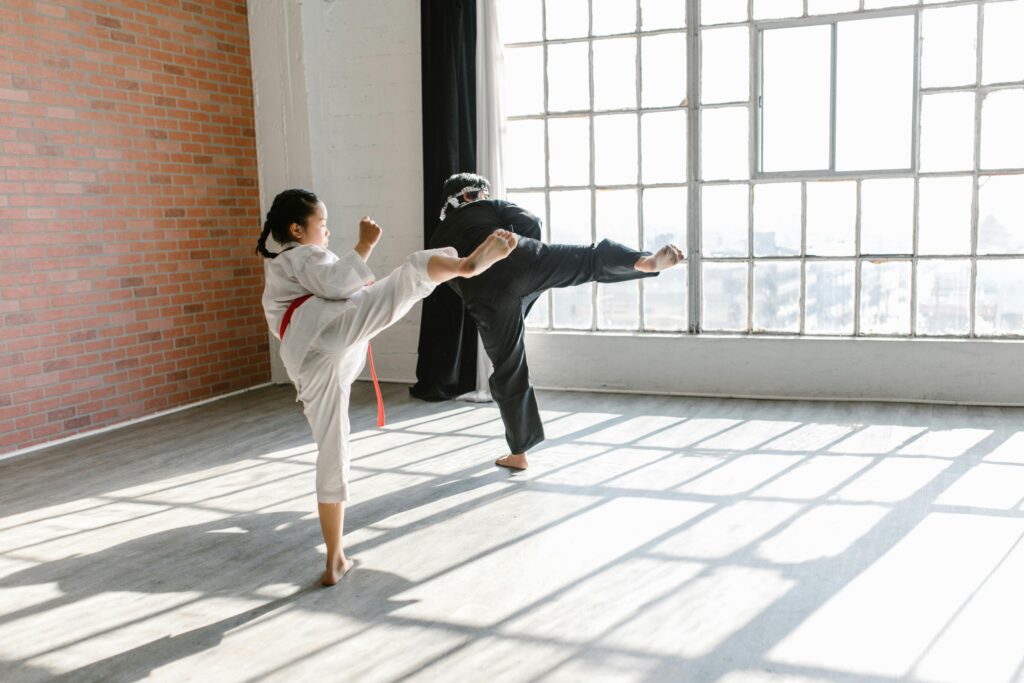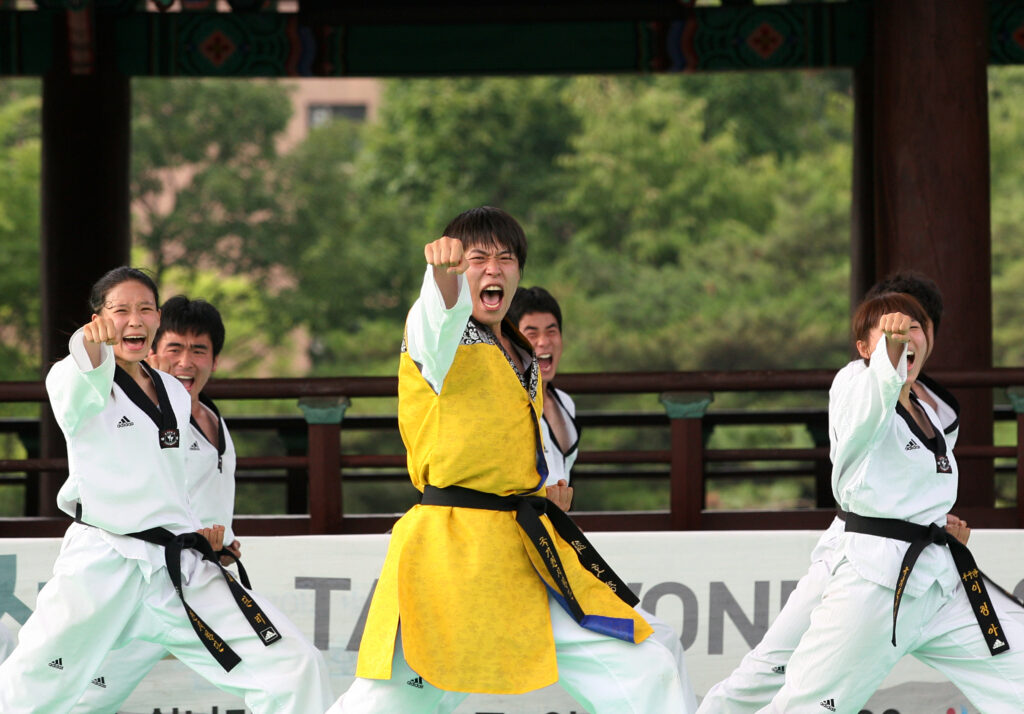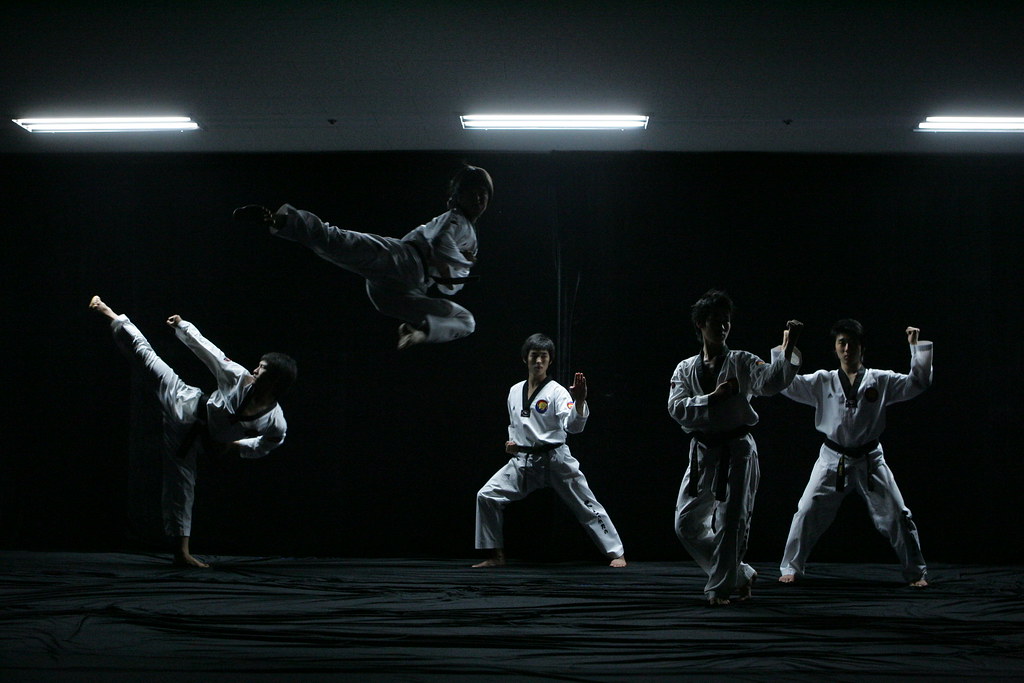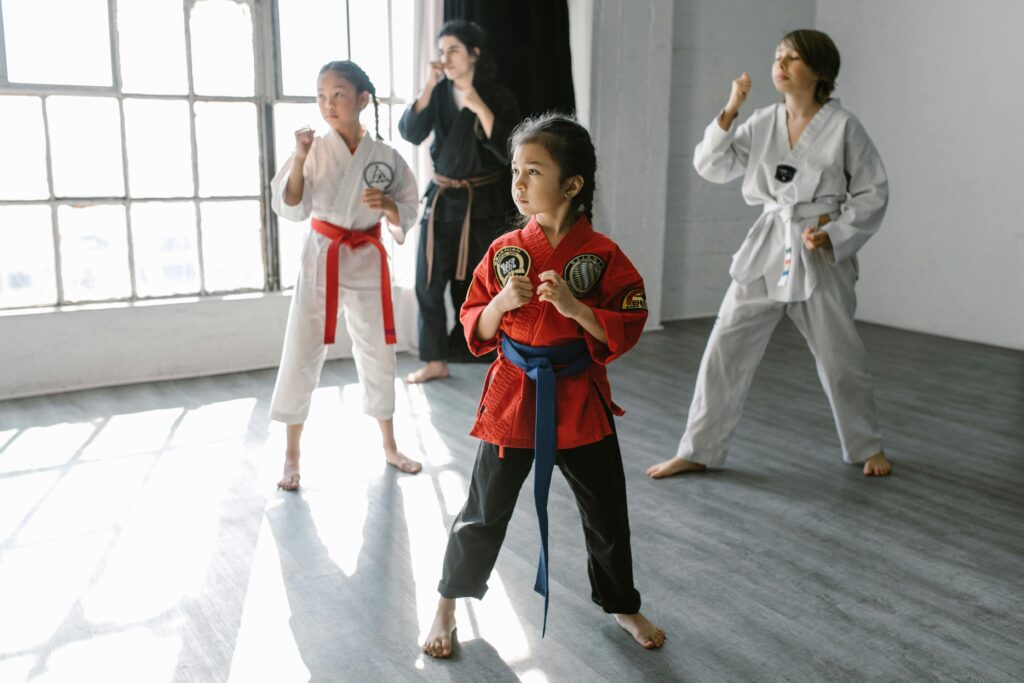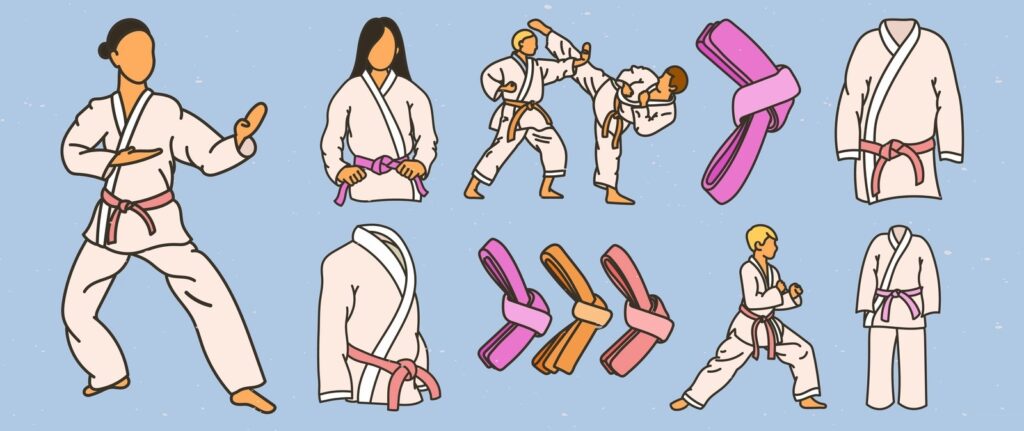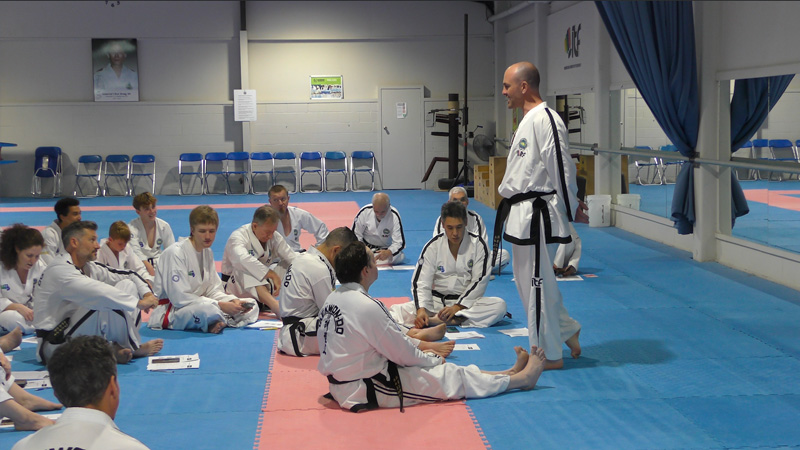Dragon Sparring Taekwon-Do — Building Power and Precision
Dragon Sparring Taekwon-Do — Building Power and Precision

Taekwon-Do isn’t just about kicking high or moving fast — it’s about discipline, confidence, and the power to stay calm even in motion. Among all its training methods, Dragon Sparring has become one of the most exciting and meaningful parts of practice. It blends skill, rhythm, and spirit, representing the powerful flow of the dragon — a symbol of wisdom and strength in martial arts.
This blog takes you through everything you need to know about Dragon Sparring Taekwon-Do, from its meaning to techniques, mindset, and how to learn it through trusted Taekwon-Do videos and expert instruction.
Whether you’re a beginner or a dedicated practitioner, this guide will help you understand why Dragon Sparring is more than a technique — it’s a way to grow both inside and outside the dojang.
What Is Dragon Sparring in Taekwon-Do?
Dragon Sparring is a form of Taekwon-Do sparring that emphasizes flow, timing, and controlled aggression. Unlike simple point-based fighting, it encourages continuous movement, seamlessly combining attack and defense into a smooth, rhythmic flow.
The “dragon” in this concept represents adaptability — being able to shift between offense and defense like water, yet strike with the sharpness of fire. In traditional Taekwon-Do and TKD sparring, this mindset helps practitioners maintain focus, balance, and confidence.
In most schools, Dragon Sparring is used to:
- Improve reaction time and anticipation.
- Develop better coordination and control.
- Strengthen both physical and mental endurance.
It’s not about overpowering your partner; it’s about understanding movement. This is what separates Taekwon-Do from other martial arts, such as karate — its rhythm, elegance, and scientific use of body motion.
If you’re new to sparring, start slow. Many Taekwon-Do videos and tutorials can show you how to step, pivot, and counter effectively.
The Meaning of the “Dragon” Symbol in Taekwon-Do Culture
In Korean culture, the dragon isn’t a creature of destruction — it’s a guardian. It stands for power guided by wisdom. In Taekwon-Do, that means knowing how to control your strength with discipline and respect.
The dragon spirit inspires students to move with purpose. When you spar, it’s not about rage or aggression — it’s about focus, honor, and flow. This is why many traditional dojangs (training halls) have dragons painted on their walls or uniforms. They remind every student that power without control is meaningless.
The Dragon Sparring Taekwon-Do method teaches this lesson in motion. Every step, punch, and kick must have intent.
If you want to read more about the heritage and symbols of Taekwon-Do, check out the About Us page on TKD Coaching.
How Dragon Sparring Builds True Martial Discipline
Discipline in Taekwon-Do doesn’t come from memorizing forms; it comes from repetition, patience, and focus. Dragon Sparring challenges your consistency. You must move, react, and stay composed even when tired.
Here’s how it shapes your martial character:
- Patience — You learn not to rush attacks. Timing becomes your greatest weapon.
- Self-Control — Even in close combat, you stay precise instead of wild.
- Focus — Every movement connects with your breathing and your opponent’s rhythm.
This training builds the same confidence found in traditional Taekwon-Do forms (poomsae).
If you ever struggle to stay consistent, visit Help & Support or learn directly from Our Expert Coaches at TKD Coaching. They guide students through structured sparring programs that develop strong habits from day one.
Taekwon-Do Sparring — Balancing Power and Control
Sparring is the heart of Taekwon-Do practice. It’s where you test not only your technique but your emotions. Many new students focus on power, forgetting that control is what makes a martial artist.
In Dragon Sparring Taekwon-Do, every movement must balance precision and strength. You might see this in TKD videos — fighters moving smoothly, landing sharp kicks, yet stopping just before full impact. That’s true mastery.
Balance also applies to your stance. Keep your weight centered, eyes focused, and breathing steady. Remember, sparring is communication — your opponent’s motion tells you when to attack, defend, or wait.
For beginners, watching Taekwon-Do sparring videos can help you understand timing and spacing before entering the ring.
Essential Sparring Techniques and Footwork
To master Dragon Sparring, you need to understand core Taekwon-Do techniques. These include:
- Front Kick (Ap Chagi): Quick and direct. Perfect for creating distance.
- Roundhouse Kick (Dollyo Chagi): Versatile, powerful, and smooth in flow.
- Side Kick (Yop Chagi): A classic defensive strike that delivers power.
- Back Kick (Dwit Chagi): Great for countering attacks.
- Punch Combination (Jirugi): Timing-based hand strikes that follow your kick.
Footwork is equally important. Always pivot your supporting foot and align your hips with your target. This makes your movement efficient and your strikes sharper.
Many taekwon-do videos break down these motions in slow detail. If you want to practice safely at home, explore the training guides available on the TKD Coaching App at Our App.
Strategy, Speed, and Mental Focus in Dragon Sparring
Speed isn’t just about kicking faster — it’s about reacting at the right time. In Dragon Sparring, you learn how to anticipate attacks and create openings.
A few mental strategies to keep in mind:
- Don’t attack blindly — observe your opponent’s rhythm.
- Stay relaxed — tension slows you down.
- Use feints to create confusion.
- Combine footwork and angles to control distance.
Mental sharpness is key. Practicing Taekwon-Do sparring drills improves reaction and helps you think under pressure.
To stay consistent, keep a training journal or follow online lessons from trusted instructors. You can even check out the Premium Membership for deeper video analysis and one-on-one feedback.
Learning from Taekwon-Do Videos — Visual Training Tools
Not every student can train in a dojang daily. That’s where Taekwon-Do videos become powerful learning tools. They show you real movement, form corrections, and rhythm.
By studying TKD videos, you can learn:
- How to combine speed and control.
- Proper defensive angles.
- Breathing and timing techniques.
You can explore quality tutorials and sparring demonstrations on the TKD Coaching YouTube Channel. It’s filled with real-life sessions, expert advice, and sparring breakdowns that match what you’d see in class.
Equipment and Safety Tips for Sparring Practice
Safety always comes first in Dragon Sparring Taekwon-Do. Proper equipment ensures confidence and injury-free training.
Essentials include:
- Headgear and mouthguard.
- Gloves and shin protectors.
- Chest guard (Hogu).
- Proper Taekwon-Do shoes or barefoot mats.
You can find approved sparring gear in the Shop. Remember, safety isn’t only about protection — it’s also about discipline. Wearing the right gear shows respect for yourself and your training partners.
The Role of Dragon Sparring in Modern TKD Competitions
In modern TKD competitions, Dragon Sparring teaches athletes how to adapt. Instead of relying on brute strength, they focus on speed, angles, and precision.
Referees and judges often reward fighters who demonstrate control — striking with accuracy, then recovering fast. This makes Dragon Sparring Taekwon-Do an essential bridge between traditional forms and competitive fighting.
Competitors who train this way develop not just skill, but character — humility, respect, and perseverance.To learn about official competition rules and preparation guides, visit the FAQ page on TKD Coaching.
Training with Expert Coaches and Online Learning
One of the best ways to master Dragon Sparring is by training with experienced instructors. Certified coaches understand not just the physical side but the philosophy behind every kick and punch.
The Our Expert Coaches page lists trusted mentors who guide you through detailed programs — from beginner drills to advanced sparring combinations.
For students who prefer flexible learning, online training through the TKD Coaching platform and app offers video lessons, feedback sessions, and community discussions.
If you ever need technical support or advice, reach out via Contact Us.
From White Belt to Warrior — A Student’s Journey in Sparring
Every Taekwon-Do student begins with hesitation — unsure of balance, afraid of getting hit. But over time, sparring transforms fear into confidence.
In Dragon Sparring Taekwon-Do, every round teaches patience and awareness. You learn to read your opponent, use angles, and trust your training.
A student’s journey looks like this:
- White Belt: Learning stance and control.
- Green Belt: Developing coordination and timing.
- Red Belt: Building confidence and combinations.
- Black Belt: Mastering flow and spirit — becoming the dragon.
That’s what makes Taekwon-Do special — it’s not just a sport; it’s personal growth in motion.
Join the Dragon Spirit — Becoming Stronger Through Taekwon-Do
The “dragon spirit” is about more than sparring — it’s about courage and wisdom. Every time you bow, train, or compete, you’re honoring that legacy.
If you want to begin your own journey in Dragon Sparring Taekwon-Do, start by watching trusted taekwon-do videos, practicing safely, and finding a mentor who guides your growth.
To continue your learning online, explore:
- Premium Membership for advanced lessons.
- Our App for daily drills.
- Help & Support for learning assistance.
Remember, real mastery isn’t about perfection — it’s about progress.
Conclusion
Dragon Sparring Taekwon-Do is more than a combat exercise — it’s a path to self-control, awareness, and confidence.
It teaches you how to use power wisely, flow with purpose, and stay calm even under pressure.
Whether you’re training at home, in the dojang, or following along with TKD videos, the goal is always the same: to grow stronger in body and spirit.
As you practice, remember what the dragon symbolizes — strength guided by wisdom. That is the true spirit of Taekwon-Do.

